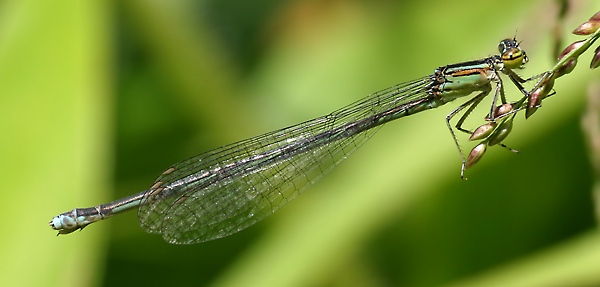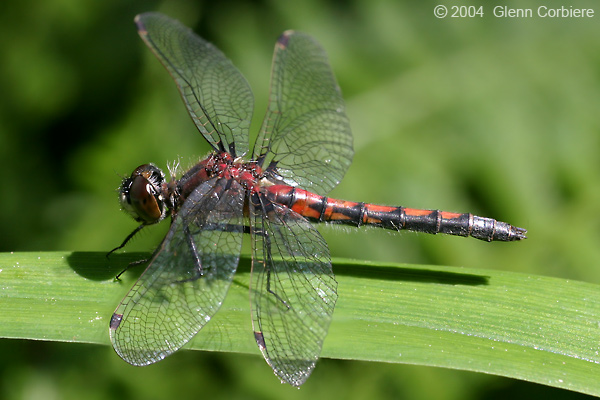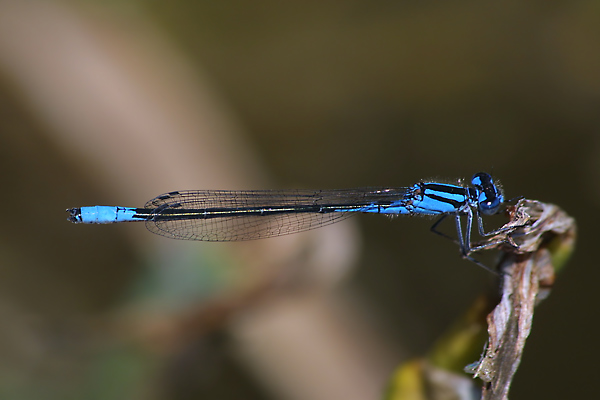Do a Little Dance with Damselflies
These insects have aliases across the world; adults are known
as sewing needles, snake doctors, horse stingers, and mosquito
hawks, and the nymphs are called water lizards. These
names come from fables in cultures that talk about damselflies
sewing people.
 It no surprise that there is a wide variety of names for
damselflies because there are about 2,838 named species
worldwide! There are close to 5,740 named damselfly and
dragonfly species worldwide, while more than 410 damselfly
species call the United States and Canada home. It is important
that we take care of the damselflies’ habitats because scientists estimate there are 500 – 1500
species that are unnamed; scientists now recognize damselflies
as indicators for environmental conditions such as water flow,
pollution, and vegetation type and abundance.
It no surprise that there is a wide variety of names for
damselflies because there are about 2,838 named species
worldwide! There are close to 5,740 named damselfly and
dragonfly species worldwide, while more than 410 damselfly
species call the United States and Canada home. It is important
that we take care of the damselflies’ habitats because scientists estimate there are 500 – 1500
species that are unnamed; scientists now recognize damselflies
as indicators for environmental conditions such as water flow,
pollution, and vegetation type and abundance.
ATTENTION! Damselflies are harmless to humans; contrary to
some cultural beliefs, they do not bite or sting.
The following characteristics can help identify damselflies
in nature:
Adults:
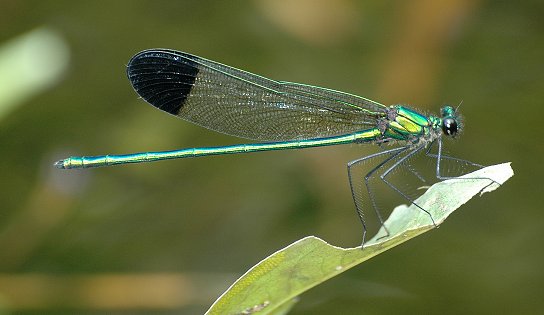 Adult
damselflies can be red, brown, yellow, green, blue, black, or a
combination of these. They usually have clear wings with
the exception of a stigma which is a spot near the end of the
wing that varies among the Zygopteran species; however, the
damselfly’s coloration changes as it ages and fades quickly
after the insect dies.
Adult
damselflies can be red, brown, yellow, green, blue, black, or a
combination of these. They usually have clear wings with
the exception of a stigma which is a spot near the end of the
wing that varies among the Zygopteran species; however, the
damselfly’s coloration changes as it ages and fades quickly
after the insect dies.
 Since
damselflies are insects, they have 6 legs, 2 antennae, and 3
body segments. Unlike other insects, though, they are long
and narrow, commonly measuring about 1.5 inches but can grow to
be 2 inches long. This length should be as long as or longer
than the wings. Damselflies hone two pairs of wings which
they usually fold above their bodies instead of folding them
over the body like most insects. Their antennae are short and
are difficult to see unless you specifically look for them.
Since damselflies are predators, they use mandibles to help capture and chew their prey after the hunt;
some people use them as live pest control in because they are
carnivorous and agile hunters.
Since
damselflies are insects, they have 6 legs, 2 antennae, and 3
body segments. Unlike other insects, though, they are long
and narrow, commonly measuring about 1.5 inches but can grow to
be 2 inches long. This length should be as long as or longer
than the wings. Damselflies hone two pairs of wings which
they usually fold above their bodies instead of folding them
over the body like most insects. Their antennae are short and
are difficult to see unless you specifically look for them.
Since damselflies are predators, they use mandibles to help capture and chew their prey after the hunt;
some people use them as live pest control in because they are
carnivorous and agile hunters.
 Damselfly
heads are large, but two compound eyes tend to dominate much of the space. Their
body is larger near the front and narrows toward the tail end,
and the abdomen is made of 10 segments. Both males and females
have clasping organs toward the end. Females lay eggs
using an ovipositor located under segments 9-10 while males have
a second pair of genitalia on segments 2-3.
Damselfly
heads are large, but two compound eyes tend to dominate much of the space. Their
body is larger near the front and narrows toward the tail end,
and the abdomen is made of 10 segments. Both males and females
have clasping organs toward the end. Females lay eggs
using an ovipositor located under segments 9-10 while males have
a second pair of genitalia on segments 2-3.
Wing Venation:
Scientists commonly use wing venation to
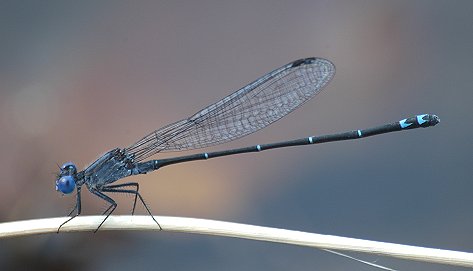 classify
damselflies, but describing the wings can become very technical,
so here is a short introduction. Zygopterae have three
major structures in wing venation: nodus, quadrangle, and
pterostigma. When describing veins, the antenodal veins
are closest to the nodus, while the postnodal veins are farthest
away. Wing venation is useful in distinguishing between
two species. For example, the Coenagrionidae family has an M3
vein just behind the nodus, but in the Lestidae family, this
same vein is closer to the wing base.
classify
damselflies, but describing the wings can become very technical,
so here is a short introduction. Zygopterae have three
major structures in wing venation: nodus, quadrangle, and
pterostigma. When describing veins, the antenodal veins
are closest to the nodus, while the postnodal veins are farthest
away. Wing venation is useful in distinguishing between
two species. For example, the Coenagrionidae family has an M3
vein just behind the nodus, but in the Lestidae family, this
same vein is closer to the wing base.
Naiad (Larva):
Naiads are damselfly larva, and
they are completely aquatic until they hatch into the adult
form. They are easy to
 spot because they look similar to
adult damselflies, but they do not have wings. Each naiad
has three feathery gills on its anterior end that help the naiad gather
oxygen so it can breathe under water. The coloring for
naiads is not nearly as eye catching as adult damselflies
because they begin a light tan color and darken each time they molt.
spot because they look similar to
adult damselflies, but they do not have wings. Each naiad
has three feathery gills on its anterior end that help the naiad gather
oxygen so it can breathe under water. The coloring for
naiads is not nearly as eye catching as adult damselflies
because they begin a light tan color and darken each time they molt.
Naiads have a slender body and long legs that they use to
move slowly through their aquatic habitats. These long
legs are also useful when clinging to rocks or vegetation.
Like their adult form, naiads are also carnivorous, and they can
be quite voracious when hunting small aquatic organisms.
FACT! Damselflies and dragonflies are not related! Keep reading to find out why...
Damselflies are more slender and sleeker than dragonflies.
Damselflies have widely separated eyes while dragonflies have
eyes on the top of their heads.
Zygoptera (damselflies) means “equal winged,” while Anisoptera
(dragonflies) means “unequal winged.”
When they are not flying, damselflies usually hold their
wings up over their backs (with the exception of
spread-winged damsels), but dragonflies hold their wings open and
to the sides.
Want to know how to identify damselflies? Click here to find out how!
To learn about other organisms, check out MultipleOrganisms.net and compare them to the damselfly!
